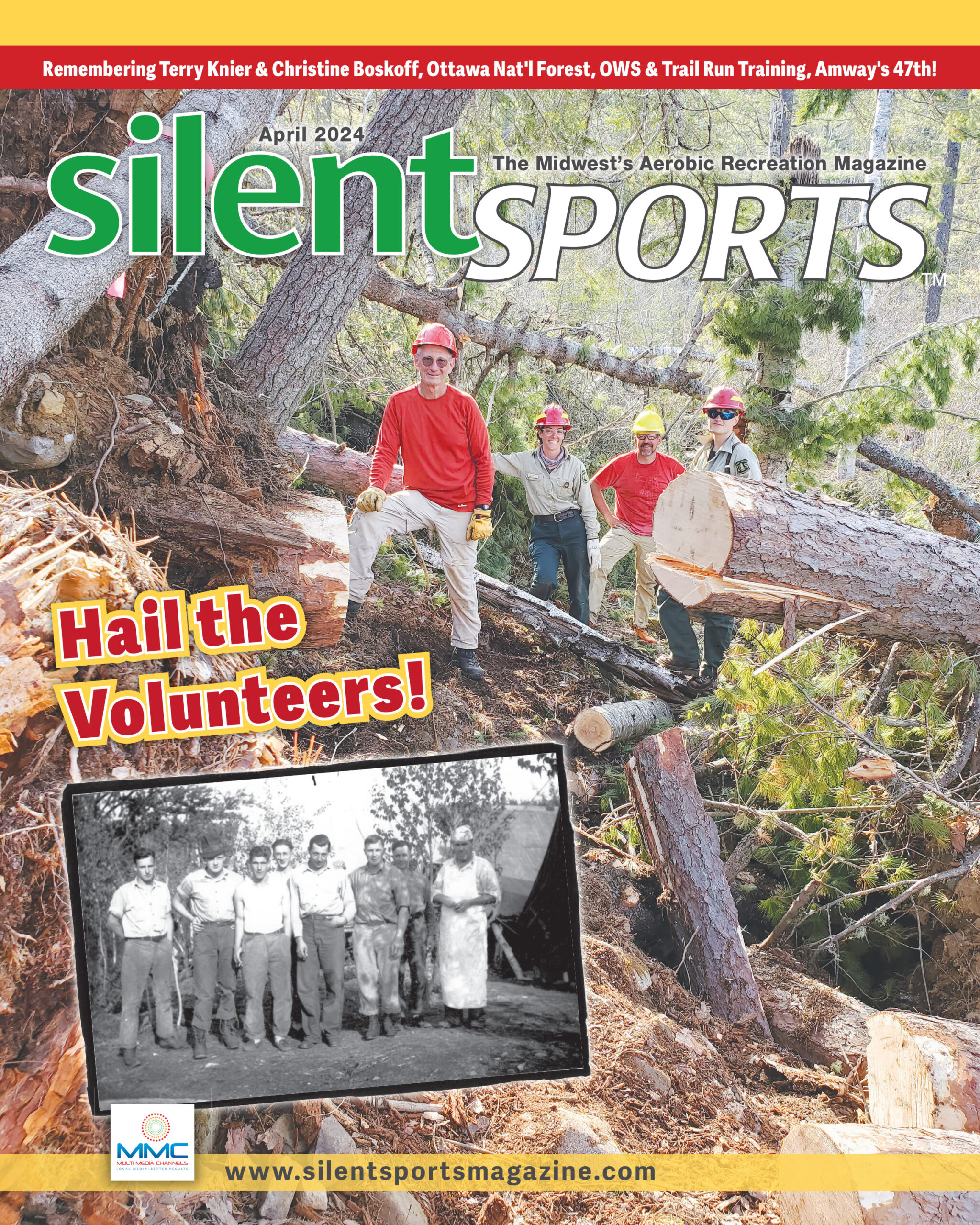Built for bikers

Glacial Hill trails are pedal perfect
Cycling with Dave Foley-
If you’d rather skip the hills, a beginners’ loop has been created near the Eckhardt Road.
Dave Foley photo
The vast majority of trail systems were originally created for skiers or hikers. That meant rides on mountain or fatbikes could be harrowing as riders faced steep descents that delight skiers and avid bikers, but were white knuckle drops for recreational cyclists. It could be even tougher on a hiker’s path having to deal with fallen trees and rock gardens, as well as navigate around hairpin curves crowded with trees. Those of us who aren’t members of the biking elite sometimes find these routes unsettling. I used to wonder, “What if there were a trail designed specifically for cyclists?” Then I heard about Glacial Hills, a 32-mile singletrack trail system located near Bellaire, Mich., that had been specifically designed for cyclists.
I knew I had to try it out.
The Grand Traverse Regional Land Conservancy, assisted by Antrim County and Forest Home Township, put together a 763-acre publicly-owned block of forest land and then – with advice from the NMMBA and the Michigan Mountain Bicycling Association – developed a series of singletrack trail loops.
A well-marked trail
We parked at the Eckhardt Road entry point, one of three access points to the trail system. Before we started, Cyndy and I studied a large map signboard at the trailhead. The trails, we noted, were rated as suitable for beginners and offered numerous options for loops ranging from a mile to a full day of pedaling.
I extracted a smaller map from a box to guide us once we were out on the trail. Carrying a map really wasn’t necessary, as every intersection was numbered and most had map signs as well. With 57 intersections, we spent more time than I would have liked stopping to see which way to go, but the riding was excellent. The trail surface was packed flat and free of tree roots and rocks, as well as being wide enough that I didn’t worry about clipping trees. However, I wasn’t looking around much. No, there were too many turns for me to take my eyes off what lay ahead of my wheel.
Hills aplenty
We climb on our fatbikes and begin following a series of seemingly never-ending tight switchbacks, as the trail snakes its way up and downhill through what once was a ski area in the 1960s. That skiers once flew down these slopes is obvious as the hill drops away sharply next to the bike path. The website, www.glacialhillstrails.org, notes that several loops have high points more than 400 feet above the trailhead. I’m grateful that the architects of the trail have avoided, for the most part, the steep ascents and climbs that would make this a perilous ride for novice cyclists.
The designers of the Glacial Hills trail worked to keep the path clear of rocks and tree roots.
Dave Foley photo
Creating gentler grades was done so Glacial Hills would be a sustainable trail which would not be as susceptible to erosion from bikes and water. Again, referring to the information found on the website, “The sustainable design ‘hides’ the climbing by incorporating flat rest zones and even some shorter downhill sections. As an example, one stretch of trail takes two miles to ultimately climb 300 feet and includes five downhill sections on the way up.”
Our entry from Eckhardt Road put us on what is considered an easier section of trail. Riders looking for the most elevation change should choose the outside loop on the trail west of Orchard Hill Road. The trail east of Orchard Hill has more elevation change, with longer climbs and faster downhills.
One of the best in the Lower Peninsula
To get another perspective, I talked with Brian Tremblay, an avid mountain biker, who lives near the Glacial Hills system, but bikes on trails throughout the state.
Tremblay began by saying, “As far as Glacial Hills goes, this is exactly what the Lower Peninsula needs. We are falling behind the UP in regards to bike trails. For the last 5-10 years, places like Copper Harbor and Marquette have been making trails that meet IMBA standards and are specifically designed for mountain bike use.”
Tremblay continued by pointing out that, “Glacial Hills and Arcadia Dunes, which is also managed by the Grand Traverse Conservancy, are the only trails that are being made to last. The design of the trails is such that they don’t get eroded and destroyed by heavy use. Comparing Glacial Hills to places downstate that are basically converted hiking trails, the importance of good design and planning becomes pretty glaring. Glacial Hills is a perfect example of how a trail system can meet the needs of runners, walkers and bikers of all skill levels.”
As we were finishing our ride that October afternoon, we were feeling good, and, with more than half of the trail left to explore, a return trip was guaranteed.
Winter brings different activities to Glacial Hills
The touring season extends through the winter as 6 ½ miles of the trail are regularly groomed for use by fatbikers. For skiers, a special route, incorporating some seasonal roads as well as bike trail, has been marked for backcountry touring. The ski trail, which begins east of Orchard Road, offers loops ranging from 1-8 miles. Snowshoers are welcome to sample all of the paths, knowing that the ample signage will guarantee no one gets lost.



